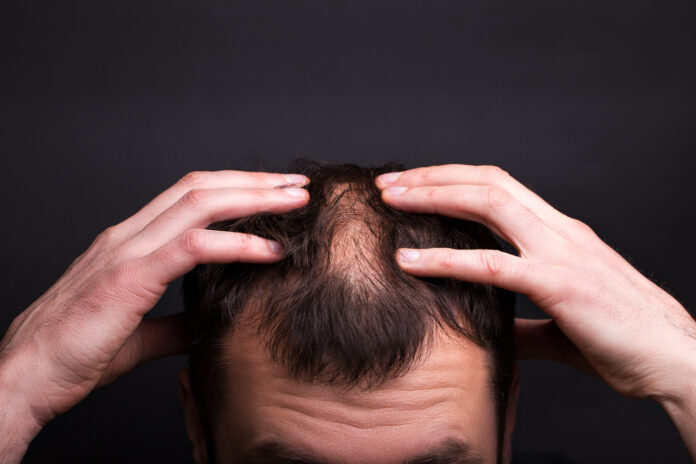A study published in the Journal of Cosmetic Dermatology looks at the rationale behind treating androgenetic alopecia using injectable botulinum toxin.
Androgenetic alopecia (AGA), also called male-pattern baldness, is one of the most common forms of hair loss in both men and women. In men, the condition causes a receding hairline and gradual thinning of hair in the temporal areas. Whereas in women, hair loss and thinning mostly occur at the crown. Currently, the FDA has only approved two drugs for the condition: Minoxidil and Finasteride. However, in recent years, multiple other treatment options have emerged for the prevalent condition. One of them being, injectable botulinum toxin (BT).
A recent study looked at the theoretical rationale behind using botulinum toxin in treating androgenetic alopecia.
Why Botulinum Toxin?
Androgenetic alopecia occurs as a result of both genetic and hormonal factors. Past studies have also found oxidative stress and perifollicular microinflammation to contribute to the condition. The study authors reported lower oxygen levels and microvascular insufficiency in bald areas in AGA. The low oxygen environment then contributes to the conversion of testosterone to dihydrotestosterone (DHT). DHT promotes the growth of transforming growth factor-β1 (TGF-β1) which in turn suppresses the growth of follicular epithelial cells. Thus, contributing to disease progression.
Since botulinum inhibits muscle contraction, the study authors believe it will help relax the scalp muscles and increase blood supply to the vessels. Thus, increasing oxygen and blood flow to bald areas.
Therefore, there would be a reduction in tissue DHT due to the effect known as ‘wash out,’ and consequently, less follicular miniaturization would occur, which is considered the main pathophysiological basis of this disease.
study authors
Moreover, men with AGA often show increased stiffness of the scalp likely due to fibrosis promoted by increased levels of TGF-β1 in the affected areas. BT injections prevent TGF-β1 secretion from hair follicles, reducing fibrosis.
Results of the study support the use of injectable BT in treating androgenetic alopecia. However, further studies are needed to confirm the rationale behind clinical use.
Reference:
Melo DF, Ramos PM, Antelo DAP, Machado CJ, barcaui CB. Is there a rationale for the use of botulinum toxin in the treatment of androgenetic alopecia? J Cosmet Dermatol. Published online April 24, 2021. doi: 10.1111/jocd.14177




